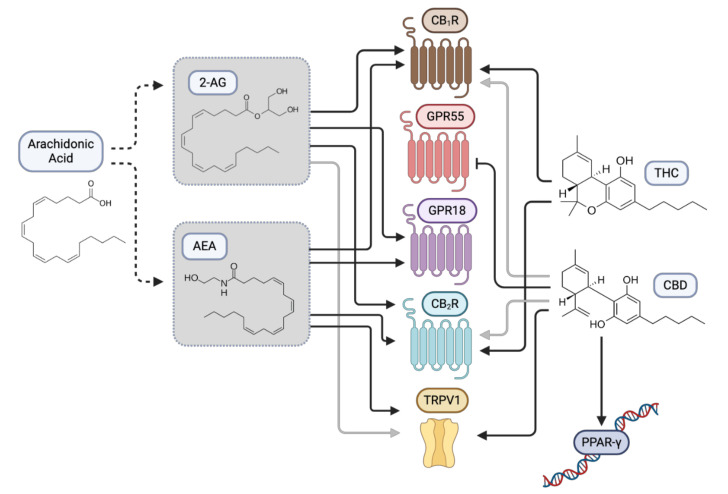Figure 1.
Plant-derived cannabinoids modulate cannabinoid and non-cannabinoid receptors in the human body. Δ9-tetrahydrocannabinol (THC) functions primarily by activating G-protein coupled cannabinoid receptors type 1 and 2 (CB1R and CB2R) that are normally stimulated by endogenous cannabinoids, such as N-arachidonoylethanolamine (AEA) and 2-arachidonoylglycerol (2-AG). Additionally, phytocannabinoids have been shown to bind and modulate the activities of non-cannabinoid receptors. Examples shown are G-protein coupled receptors including GPR55 and GPR18, transient receptor potential channels (e.g., TRPV1) and peroxisome proliferator-activated receptors (e.g., PPARγ).

